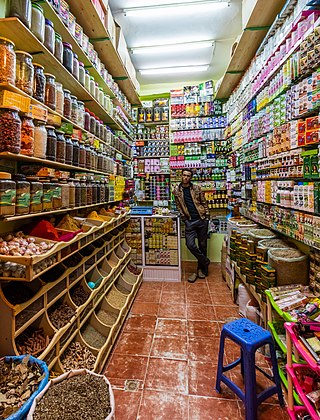This article has multiple issues. Please help improve it or discuss these issues on the talk page . (Learn how and when to remove these template messages)
|
Channel conflict occurs when manufacturers (brands) disintermediate their channel partners, such as distributors, retailers, dealers, and sales representatives, by selling their products directly to consumers through general marketing methods and/or over the Internet.
Contents
- Finance
- Internet
- Type of channel conflicts
- Vertical channel conflicts
- Horizontal channel conflicts
- So what do the manufacturers have to do?
- References
Some manufacturers want to capture online markets for their brands but do not want to create conflicts with their other distribution channels. The Census Bureau of the U.S. Department of Commerce reported that online sales in 2005 grew 24.6 percent over 2004 to reach US$86.3 billion. [1] By comparison, total retail sales in 2005 grew 7.2 percent from 2004. [1] These numbers made the online marketplace attractive to manufacturers but raised the question of how to participate without harming existing channel relationships.
According to Forrester Research and Gartner from 2007, despite the rapid growth of online commerce, an estimated 90 percent of manufacturers did not sell their products online. Of these, 66 percent identified channel conflict as their single biggest issue[ citation needed ]. However, results from a survey show that click-and-mortar businesses have an 80% greater chance of sustaining a business model during a three-year period than those operating just in one of the two channels.
E-commerce is the most popular second distribution channel because of its low overhead expenses and communication costs. This advantage is also a disadvantage, since consumers can also communicate less expensively and more easily with one another in the online marketplace. Therefore, price and product differentiation are more challenging in online markets. [2]
Channel conflict can also occur when there has been overproduction. This results in a surplus of products. Newer versions of products, changes in trends, insolvency of wholesalers and retailers, and the distribution of damaged goods also affect channel conflict. In this connection, a company's stock clearance strategy is important.
To avoid a channel conflict in a click-and-mortar business, it is necessary to ensure that both traditional and online channels are fully integrated. This reduces possible confusion with customers while providing the business benefits of a dual channel. [3] [4] [5] [6]
Manufacturers today sell their products through a broad array of channels. Since most manufacturers sell through several channels simultaneously, channels sometimes find themselves competing to reach the same set of customers. When this happens, channel conflict is virtually guaranteed. In turn, such conflict almost invariably finds its way back to the manufacturer.
This can also be termed as a situation when a producer or supplier bypasses the normal channel of distribution and sells directly to the end user. Selling over the Internet while maintaining a physical distribution network is an example of channel conflict.
- Channel conflict comes in many forms. Some are mild, merely the necessary friction of a competitive business environment. Some are actually positive for the manufacturer, forcing out-of-date or uneconomic players to adapt or decline. Other conflicts, however, can undermine the manufacturer's business model. Such high-risk conflicts generally occur when one channel targets customer segments already served by an existing channel. This leads to such a deterioration of channel economics that the threatened channel either retaliates against the manufacturer or simply stops selling its product. The result is disintermediation, in which the manufacturer suffers.
- The two main disintermediation causes are finance and the internet.







